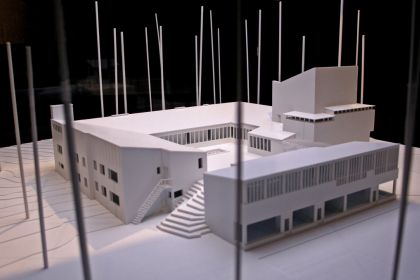ORCHESTRA
Valse triste: why wasn't Sibelius' famous piece performed on his 150th birthday?

Sibelius by Berliner Philharmoniker LP cover
Music Period: 20st Century Classical
Country: Finland
Valse triste or Sad Waltz is a short orchestral composition written by Jean Sibelius in 1903 for Kuolema, a drama by the Finnish writer Arvid Järnefelt. Originally conceived as an opening section for a six-piece incidental music score, Valse triste gained immense popularity and was later reworked into a separate concert piece that remains one of Sibelius' best-known compositions.
The plot of Kuolema, which means death, describes the life of Paavali who, as a child, witnesses the death of his mother, and years later follows her apparition into the depths of his burning house.
In the play, Valse triste accompanies scenes showing the dance of Paavali's mother who rises twice from her deathbed to waltz surrounded by ghostly couples while Paavali falls asleep. The dance is interrupted by a sharp knock on the door and the appearance of Death.
Listen to Sibelius' Valse triste performed by Herbert von Karajan with Berliner Philharmoniker:
Curiously, Sibelius sold the orchestral and piano versions of Valse triste to his Finnish publisher Fazer & Westerlund for 200 marks, the equivalent of today's $3,000. Subsequently, the work was resold to Breitkopf & Härtel which would eventually prevent the performance of Valse triste by the Vienna Philharmonic at the commemoration of the composer's 150th birthday. Regarding the cancellation of the performance, the Vienna Philharmonic stated that such an outcome was "due to unacceptable demands made by the publisher".



